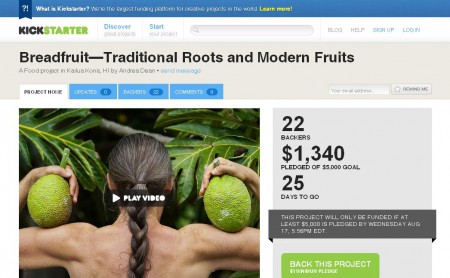- Agricultural landscapes and biodiversity in China. Traditional farming practices good for biodiversity, modern bad. Therefore need intensification, to take pressure off natural habitats. But no, wait, that usually means monocultures and chemicals, which are bad. Oh crap. No mention of genebanks.
- Innovation in input supply systems in smallholder agroforestry: seed sources, supply chains and support systems. Decentralized commercial system probably best for getting quality agroforestry seed to smallholders. Unfortunately, nobody listening.
- Characterization of Italian lentil (Lens culinaris Medik.) germplasm by agronomic traits, biochemical and molecular markers. I object in principle to any paper that says a particular landrace is “the best.”
- The relationship between heterosis and genetic distances based on RAPD and AFLP markers in carrot. It is positive. Was this really not known before in carrots? What am I missing?
- Genetic diversity of taro (Colocasia esculenta (L.) Schott) in Vanuatu (Oceania): an appraisal of the distribution of allelic diversity (DAD) with SSR markers. 10 villages, 344 landraces, 324 distinct multilocus genotypes, genetic pattern reflects social networks. Situation in Andaman Islands not quite so interesting.
- A study of genetic diversity among Indian bread wheat (Triticum aestivum L.) cultivars released during last 100 years. More diversity after Green Revolution than before, but steadily decreasing.
- Ex situ conservation genetics: a review of molecular studies on the genetic consequences of captive breeding programmes for endangered animal species. Restricted access, and you know what? I couldn’t care less.
- Consequences of wooded shrine rituals on vegetation conservation in West Africa: a case study from the Bwaba cultural area (West Burkina Faso). I expect there are some, but with restricted access, what’s the point of even linking?
- Evaluating sweet potato as an intervention food to prevent Vitamin A deficiency. To have an effect, you’d have to replace all the other types with orange-fleshed ones. Well, almost. Wonder whether it will be presented at the “International Scientific Symposium on Food & Nutrition Security Information: From valid measurement to effective decision-making” early next year.
- Evaluation of variability of morphological traits of selected caraway (Carum carvi L.) genotypes. They’re actually breeding this stuff in Poland. But they had to get their germplasm from botanical gardens around Europe.
- Variation in baobab seedling morphology and its implications for selecting superior planting material. There is some.
- Edible Neotropical blueberries: antioxidant and compositional fingerprint analysis. The 5 species involved have different ones.
- Population genomics and speciation in yeasts. There’s a question as to whether yeast species in fact exist in any meaningful sense.
- Cereal–forage rotations effect on biochemical characteristics of topsoil and productivity of the crops in Mediterranean environment. Continuous cereal stressed the soil.
Nibbles: IBC18, Sustainable intensification, Macadamia, Endangered turtle, Transgenic grass skirts
- More on #IBC18 from AoB. Web 2.0 as it should be.
- EurActive.com with massive dossier on sustainable intensification in Europe. Not much diversification there, though, except for intercropping.
- Boffins look for wild macadamias with thinner shells for wimpy consumers. Well, not just that.
- The ancient Maya mixed up their turtles.
- Grass skirts latest GMO fear.
Contribute to video on culture of breadfruit in Hawaii
Your contribution to our Kickstarter campaign will help us to edit and distribute a web-series of video interviews with Hawaiian cultural experts on the culture and history of breadfruit and what breadfruit means for the future of Hawai‘i.
25 days and $3,660 to go. Please give generously! 22 people already have. And isn’t Kickstarter a great idea?

Nibbles: AnGR, Fruit trees, IBC18, Tree pollination, Solomon Islands and climate change, Octopus diversity, Seed saving
- Livestock diversity in the hands of FAO. No comment.
- Let them eat fruit!
- AoB breaks down International Botanical Congress 18 for us.
- Species-poor tree plantations could be good for conservation of rare tree found in remnant forest patches in Chile because they encourage pollinators to move on. Agriculture, on other hand, is bad because it lures generalist pollinators into staying. Nature, don’t you just love it?
- Climate-proofing the Solomon Islands to include “the isolation of crop species tolerant of high salinity, high rainfall, and drought.” Strewth.
- Marine diversity. (Only kidding.)
- Good advice on home seed saving from Suzanne Ashworth. She wrote the (a?) book.
Nibbles: Fish, Veggies, Fruit
- Sturgeon being farmed in Vietnam. What could possibly go wrong?
- Ghanaians eating all their greens to fight malnutrition.
- ICRAF goes to town on fruit trees. Well, I call that a pretty balanced and nutritious meal so far.